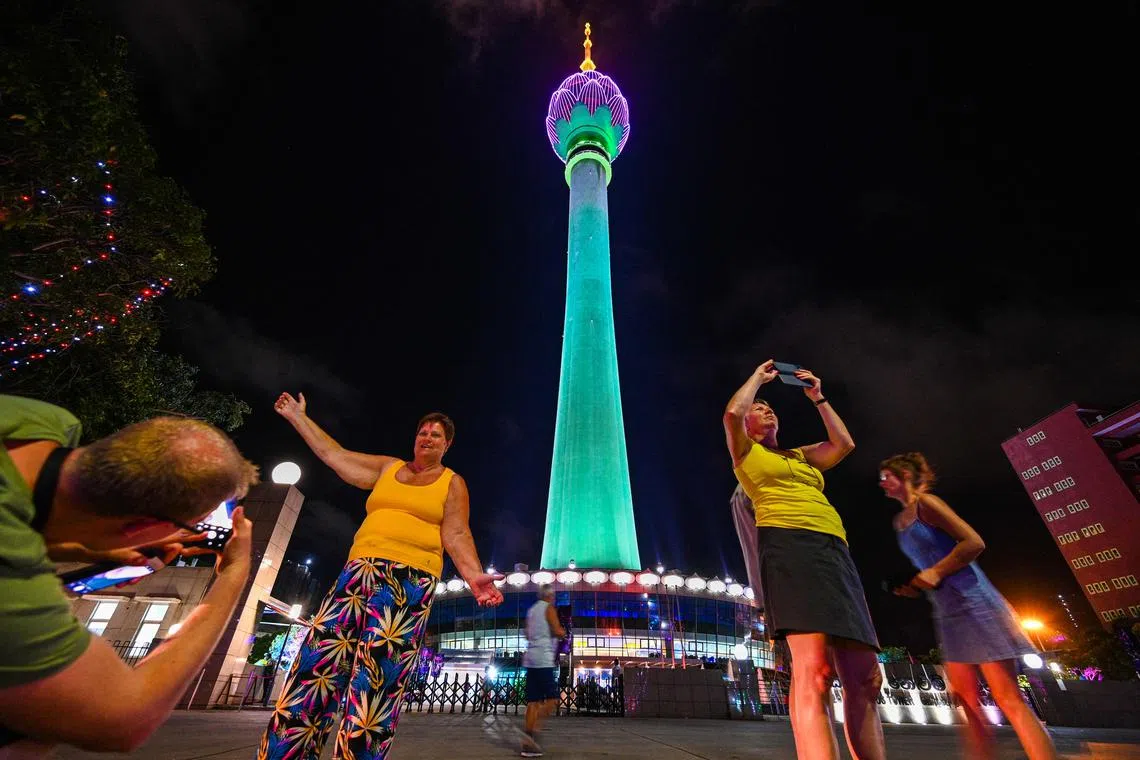Sri Lanka ends resort blackouts to woo back tourists
Sign up now: Get ST's newsletters delivered to your inbox

Tourists take pictures in front of a Chinese-built Lotus Tower after it was opened to the public in Colombo, on Sept 15.
PHOTO: AFP
Follow topic:
COLOMBO - Sri Lanka said on Thursday that it was reorganising its blackout-prone electricity grid to guarantee power to tourist resorts, in an effort to lure back foreign travellers after a bruising economic crisis.
Months of food, petrol and pharmaceutical shortages brought widespread misery to the island nation this year, along with power cuts that reached 13 hours a day at their worst.
The unprecedented financial shock sparked months of angry protests, culminating in July, stormed the compound of then President Gotabaya Rajapaksa
But the crisis has since eased and the government that took charge after his departure is eager to jumpstart the tourism industry, a crucial source of revenue.
“We will have a good winter season,” Tourism Minister Harin Fernando told reporters in Colombo. “The situation has improved, and it is safe for holiday-makers.”
The Energy Ministry announced that designated tourist areas would be exempt from national blackouts still in force for 2½ hours each night.
Those areas include Sri Lanka’s lush southern coastal beaches and the hill region around Ella, home to nature reserves famed for their elephant herds.
Sri Lanka has been unable to meet its energy demand after struggling to pay for imported fuel for power plants.
But the ministry said recent rain had filled dam reservoirs for hydroelectricity and eased pressure on the grid.
Sri Lanka’s worst economic crisis since independence from Britain in 1948 began when the country ran out of foreign exchange to pay for vital imports.
The Covid-19 pandemic dealt a hammer blow to tourism and foreign remittances from Sri Lankans working abroad, both crucial sources of income.
Mr Rajapaksa’s government was also blamed for worsening the crisis through excessive spending and mismanagement.
Sri Lanka defaulted on its US$46 billion (S$62.5 billion) foreign debt in April.
Mr Rajapaksa’s successor, Mr Ranil Wickremesinghe,
Sri Lanka is now in talks with international creditors to restructure its borrowings and secure an International Monetary Fund bailout.
The tourism industry has bounced back strongly despite the downturn and political unrest.
Nearly 570,000 foreign travellers visited Sri Lanka in the first 10 months of the year, up from 200,000 the year before. AFP

